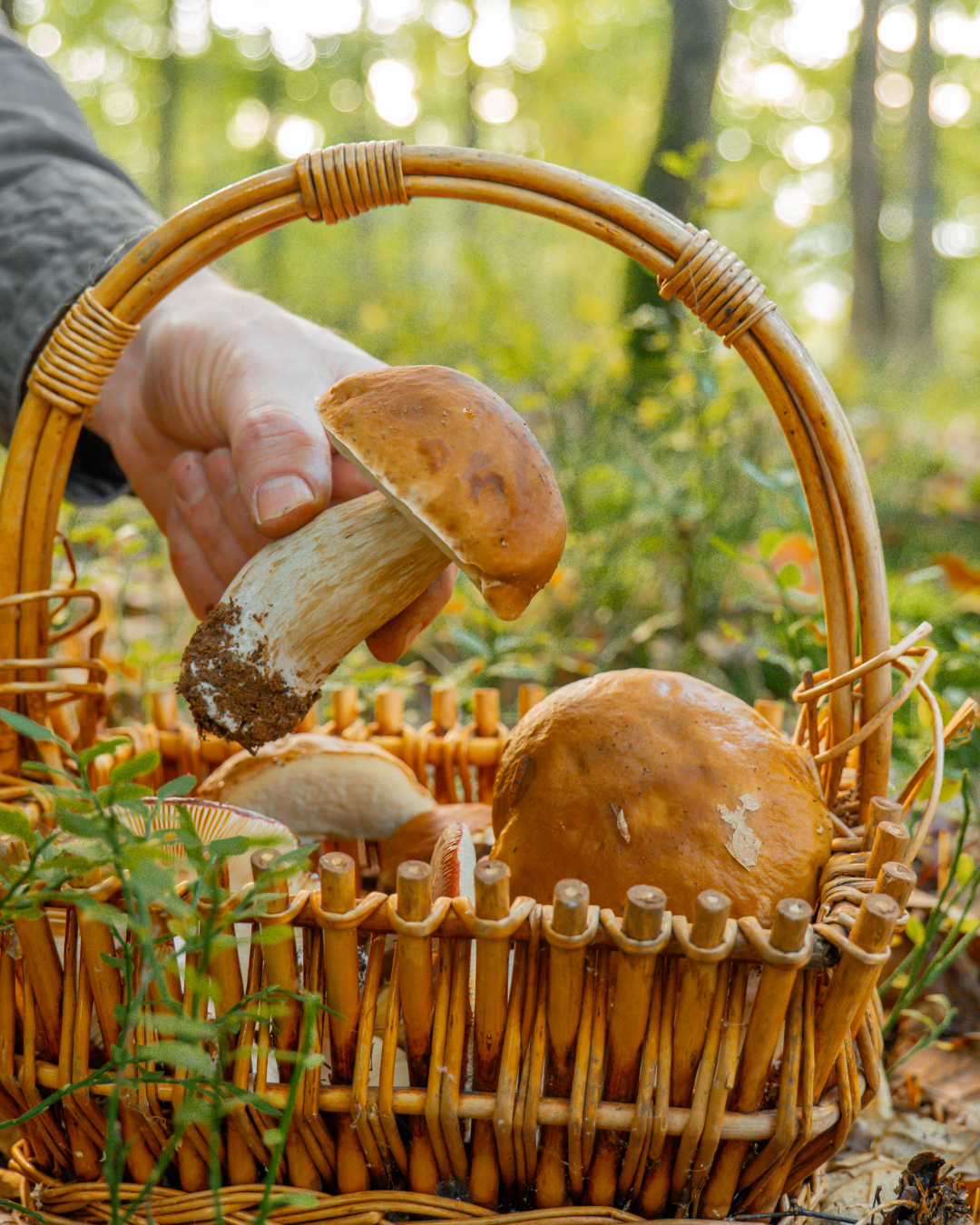
Mushroom picking is a cherished autumn tradition in Switzerland, combining the joy of hiking, reconnecting with nature, and bringing home delicious forest treasures. But it requires caution, knowledge, and respect for ecosystems. This guide provides everything you need to forage with confidence.
Most mushrooms appear from late summer through autumn, especially after rainfall followed by mild weather. Some species, like morels, emerge in spring, but autumn remains the most abundant season.
Avoid frosty periods and long dry spells, which hinder mushroom growth.
Switzerland grants freedom to roam in forests and pastures, but each canton regulates mushroom foraging with specific restrictions:
Around 12 mushroom species are nationally protected and must never be harvested. Always consult local forestry services or associations such as VAPKO before heading out.
Find more information on www.vapko.ch
• Use a wicker basket or breathable cloth bag—never plastic.
• Cut mushrooms at the base rather than pulling them out, preserving the underground mycelium.
• Do not remove distinctive parts (like the base or volva) that are key for identification.
• Leave behind specimens that are too young, too old, or infested.
• Keep different species separated to avoid confusion.
• Never rely on folklore tests (e.g., garlic or silver spoon) to check edibility.
• Only eat mushrooms you can positively identify.
• Many Swiss cantons offer free expert inspection services during the season.
• Avoid harvesting near busy roads or polluted areas, as mushrooms can absorb heavy metals.
• When in doubt—do not eat it. Poisonous species like the Amanita phalloides can be lethal.
• Pick moderately: never empty a site.
• Leave some mushrooms to release spores and ensure future growth.
• Tread lightly and avoid damaging undergrowth.
• Respect restricted zones and protected species.
• Forage mindfully—mushrooms are vital for forest biodiversity.
• Clean mushrooms gently with a brush or damp cloth—avoid soaking them.
• Store in paper bags in the fridge for 1–2 days.
• Freeze only after cooking or blanching.
• Dry mushrooms for long-term storage; drying enhances flavor.
• Cook into risottos, soups, omelets, or sauces for a real autumn treat.
• Edible favorites: porcini (Boletus edulis), chanterelles (Cantharellus cibarius), morels (Morchella spp.).
• Protected species: about a dozen mushrooms are nationally safeguarded—check lists before picking.
• Toxic lookalikes: death cap (Amanita phalloides), fly agaric (Amanita muscaria), deadly galerina (Galerina marginata).
Mushroom picking in Switzerland is both rewarding and relaxing, but it demands careful attention to laws, safety, and sustainability. By respecting local rules, learning proper identification, and foraging responsibly, you can enjoy the magic of Swiss forests while preserving them for future generations!